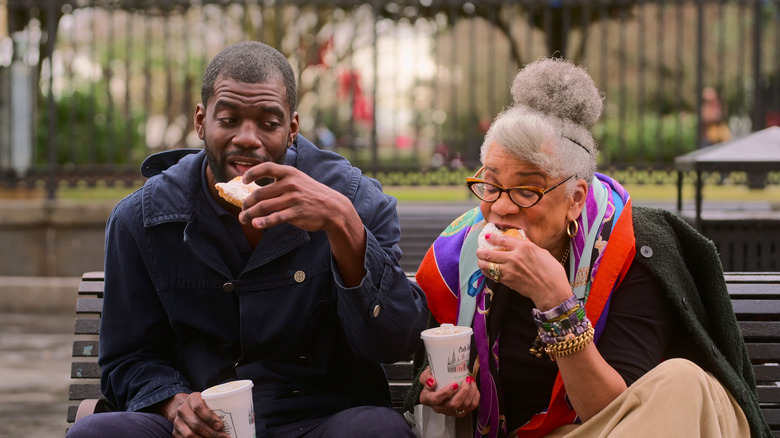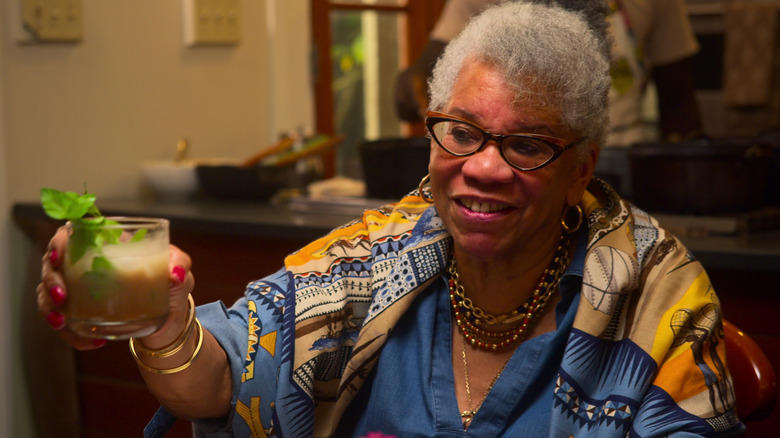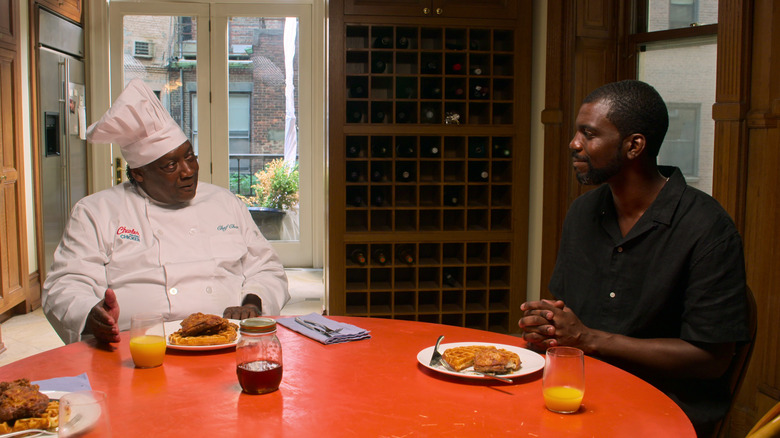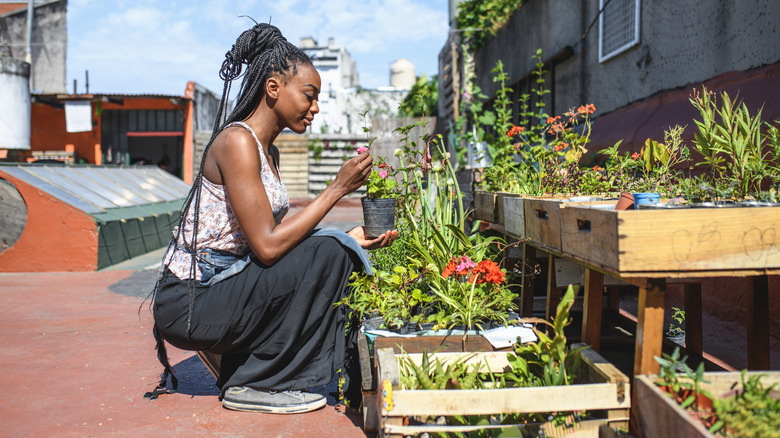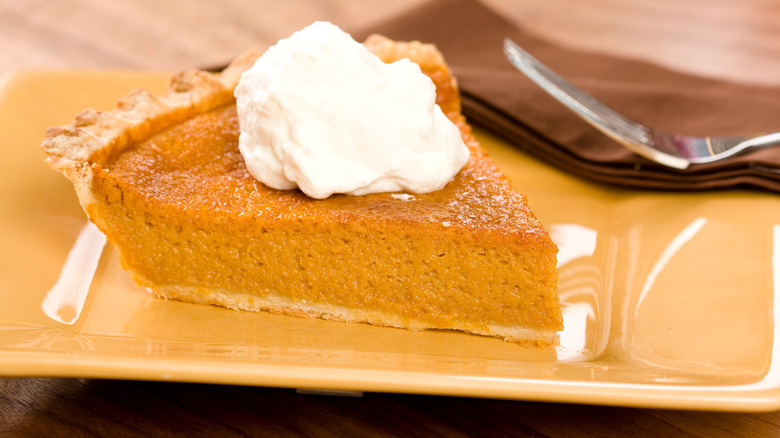Stephen Satterfield And Jessica B. Harris Discuss The Great Migration In High On The Hog - Exclusive Interview
Stephen Satterfield is a sommelier, food journalist, and the host of Netflix's food documentary series "High on the Hog," which is based on the book of the same name by culinary historian Dr. Jessica B. Harris. Like the book, the show documents the journey of Black food from Africa via the slave trade to the U.S., tracing how African-American cuisine adapted to different historical and cultural circumstances.
Season 1 focuses mostly on the African roots of American foods and on earlier U.S. history up through the Civil War. The second season, which debuts on November 22, continues the narrative, showing how Black foodways changed during the Great Migration, when Black Americans moved from the rural South to big cities in other parts of the country. The new season also explores how food helped power the Civil Rights and Black Power movements of the mid-20th century.
We spoke to Satterfield and Harris about their experiences filming the show and what foods and people impacted them the most. As they noted, documenting the history of Black food involved bearing witness to much hardness and adversity, but making "High on the Hog" also allowed them to experience culinary masters practicing their craft at the highest level. Their answers to our questions, like the show itself, were both profound and educational.
How High on the Hog changed for TV
My first question is for Jessica. I'm curious what it's been like to adapt your written work to TV, and if there are stories that work better in the visual medium or vice versa.
Jessica B. Harris: Interesting question. First of all, I didn't adapt it, per se. I wrote the book. It was adapted by a team of folks, so it was very much a team effort. Some stories lend themselves more to TV, and that's one of the virtues of this particular second season, because we're now not having people talk about history as much as having people who actually made the history talk about themselves. That creates another level of compelling viewership. It's been an extraordinary journey to see how it's been adapted, and then how people have reacted to the adaptations.
Urbanization transformed African-American cuisine
It must be powerful to see the transformation — and speaking of transformations, a lot of this season is about how the Great Migration transformed cuisine. What sort of trends or threads have you noticed, looking at African-American cuisine as it has spread beyond the South to the North and West?
Stephen Satterfield: Well, if we're talking about migration, we're talking about a time when Black folks were moving into urban environments, moving off the land, often by choice, but into a new environment. We do talk a little bit about this in the first episode. Urban environments and the wage-labor system that many of us moved into from emancipation lent itself to a certain kind of eating that, in many ways, isn't even Black or white — it's a reflection of ways of life in that time in history.
As far as new or prevailing food trends, it was a period in maybe the '20s, the '30s, of trial but also indulgence. But to my mind — and I'm not the historian on the call here — it's really about urbanization. [It's] a move from an agrarian people into a working people and an urban people, but also getting to try stuff out in the world, and all that comes along with that.
Harris: The other thing is that you can look at movements. For example, if you look at the patterns of migration in the Great Migration, you get southern Louisiana, that Creole world that goes to Texas and to Oklahoma and ends up in Los Angeles. You can still get great Creole food in LA — better Creole food in LA than you can get in Mississippi. Mississippi ... If you follow those patterns of migration, Chicago is a barbecue town. Barbecue goes straight out of Mississippi. North Carolina sometimes connects with New York, but New York City is not a barbecue city. It may be becoming one, but it's not. But if you look at all of those patterns of migration, you find interesting trends and the way that food traveled with those great migrations.
The promise of urban gardening
Coming back to urbanization, and the estrangement from the land that happened as a result of that, you touch on urban gardening or urban farming in the show. Do you view that as a promising avenue in the future to reclaim a bit of that close relationship with how food is grown and made?
Harris: Absolutely. That whole urban farming movement is growing and is increasingly important. But when you think of the number of urban farmers, you begin to see that it's not just a localized thing that might be in Detroit or Chicago or New York or LA, but that it is a national movement. Returning to the land, Black farming, Black farmers who are farming for a living as opposed to maybe 25, 30, 40 years ago, when people were like, "I can't get off a farm fast enough" ... Now we've got that happening. You've got all of those kinds of changes that are coming along as well.
What Stephen Satterfield can't forget from filming
What were some of the most surprising things you learned while you were filming Season 2? And what are some of the standout dishes that still are bright in your mind?
Satterfield: These are two hard questions for me, actually, because I'm trying to say something that has been said repeatedly but in a way that maybe is different, which is about our living history. What is learned is different than what is read. When you are in the flesh, what is possible to retain? The context. I remember during filming, sitting with Dr. Georgianne Thomas in Atlanta — one of the activists — the moment when she bares a scar from a cigarette being put out on her at a protest.
I could've easily read this story and been appalled. But watching someone bare a scar on their arm is so much more visceral. It became my scar too. I felt that, actually, quite literally. How can you cover that ground? Even as I'm trying to share it with you, there are limitations.
As far as learning, every time we shot, I learned something. Even if there was information that I knew, learning is an embodied experience, and wisdom is an embodied experience. I was around people who were helping me learn more and grow more wise through the telling of their stories.
Standout dishes from Season 2
That in-person experience is hard to replicate, although the show does a good job of getting as close as it can with the visual medium it has at its disposal.
Satterfield: Thank you.
Have any of the dishes you encountered this season worked their way into your home cooking?
Satterfield: The short answer is no; it hasn't worked its way into my home cooking. But that says more about the way that I'm eating and living than it does about the show — too much takeout.
Harris: That's not a good thing ... There are a couple of things that I would like to see work their way into my home — those burnt ends and some of the food that was particularly in the Chicago episode. I also desperately want to take Tiffanie Barriere's punch and find a way to do that. I'm not a sweet-eater or a dessert-eater, but Cheryl Day's pie — I wanted to go face-down in that. There were so many dishes that I wish I could incorporate into my home eating, but that's going to have to wait for another lifetime, probably.
Satterfield: That's so true. There's a lot of technical proficiency among these chefs. You can look and taste, but I'm never going to be able to make a pie like Cheryl Day. I can't do that. That's why it's such a privilege, too. We're just like you. It's a treat for us to be there and to eat the food.
The surprising roots of sweet potato pie and mac and cheese
Since we're in the holiday cooking season, are there any classic holiday dishes that people might be surprised to find have African-American roots or that are particularly significant for you?
Satterfield: I'm now trying to think about — what do people eat during the holidays? Dr. J?
Harris: Well, I got two for you. Arguably sweet potato pie. Sweet potato pie possibly — and I'm saying possibly, I'm not saying definitively — might have been an African-American swap-out for pumpkin pie that was prevalent in the South. But the dish that always turned up on my family's Thanksgiving table that we learned about in the last series is mac and cheese. That and the connection with James Hemings is certainly something we might want to think about this Thanksgiving.
Satterfield: I was going to say mac and cheese, but then I was like, "Are we all doing that?" I just want to be sure. For me, the holidays are very much about mac and cheese season. And yes, we did learn about that history in the first season of the show.
"High on the Hog" Season 2 is available to stream on Netflix.
This interview has been edited for clarity.
